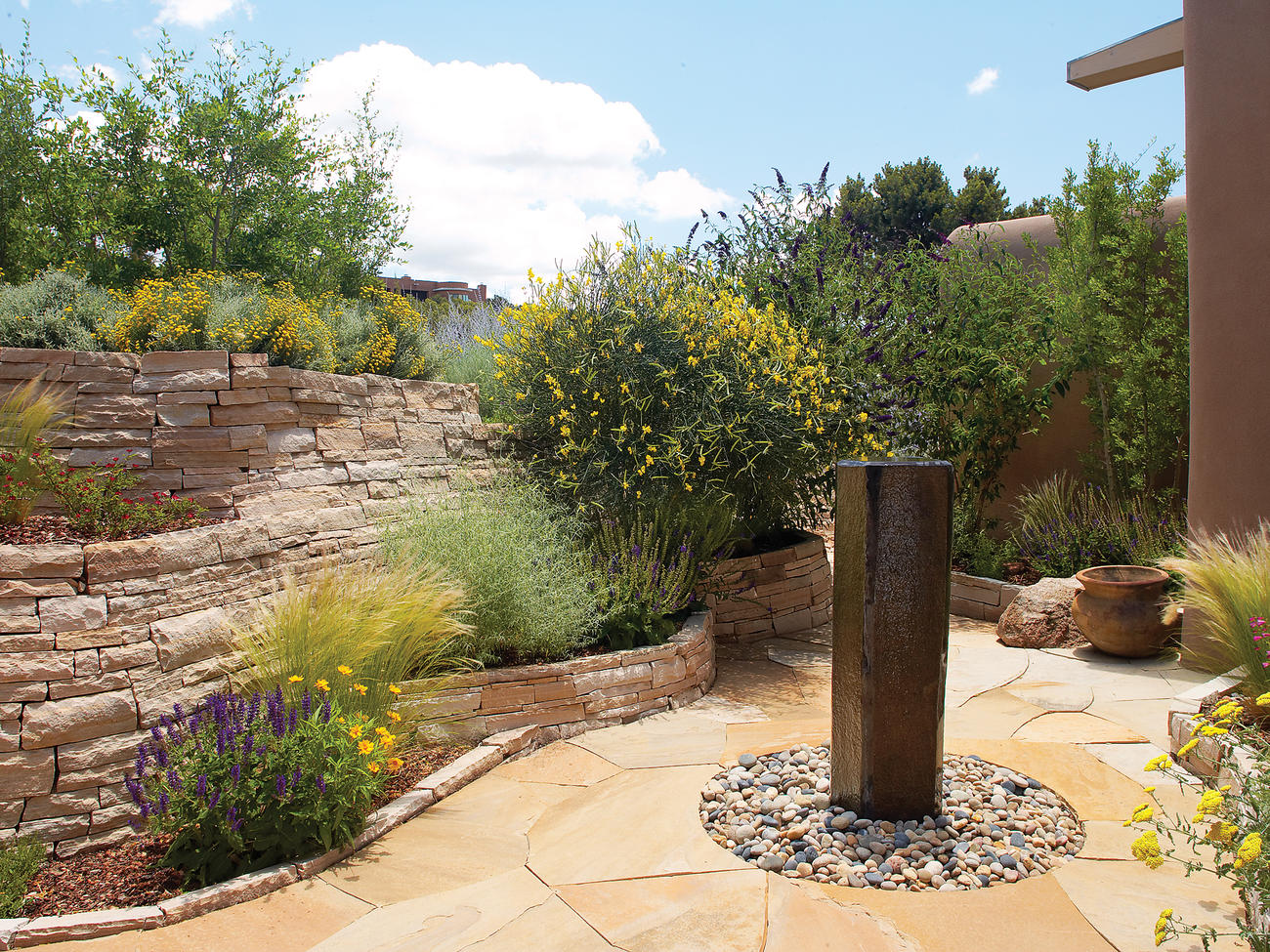
Design a Butterfly-Friendly Canyon
This sheltered front entrance pleases winged visitors too

Thomas J. Story
Flagstone skirting a simple columnar fountain gives the impression of a path winding through a canyon. Yellow- and blue-flowering plants, such as agastache, butterfly bush, and Spanish broom, provide plenty of color near the entry and along the driveway.
Basking in the sun out of the wind is a pleasure for many living creatures.
The below-grade entrance to this Santa Fe home is an ideal spot for butterflies, says landscape designer Nate Downey, who helped create it.
Multitiered raised beds and house walls protect the courtyard from breezes. The fountain in the center provides the butterflies with a necessary supply of water. (After spilling down the column, it moistens the rocks below before disappearing underground; siphoning water from a puddle beneath wet rocks is a butterfly’s preferred way to drink.)
